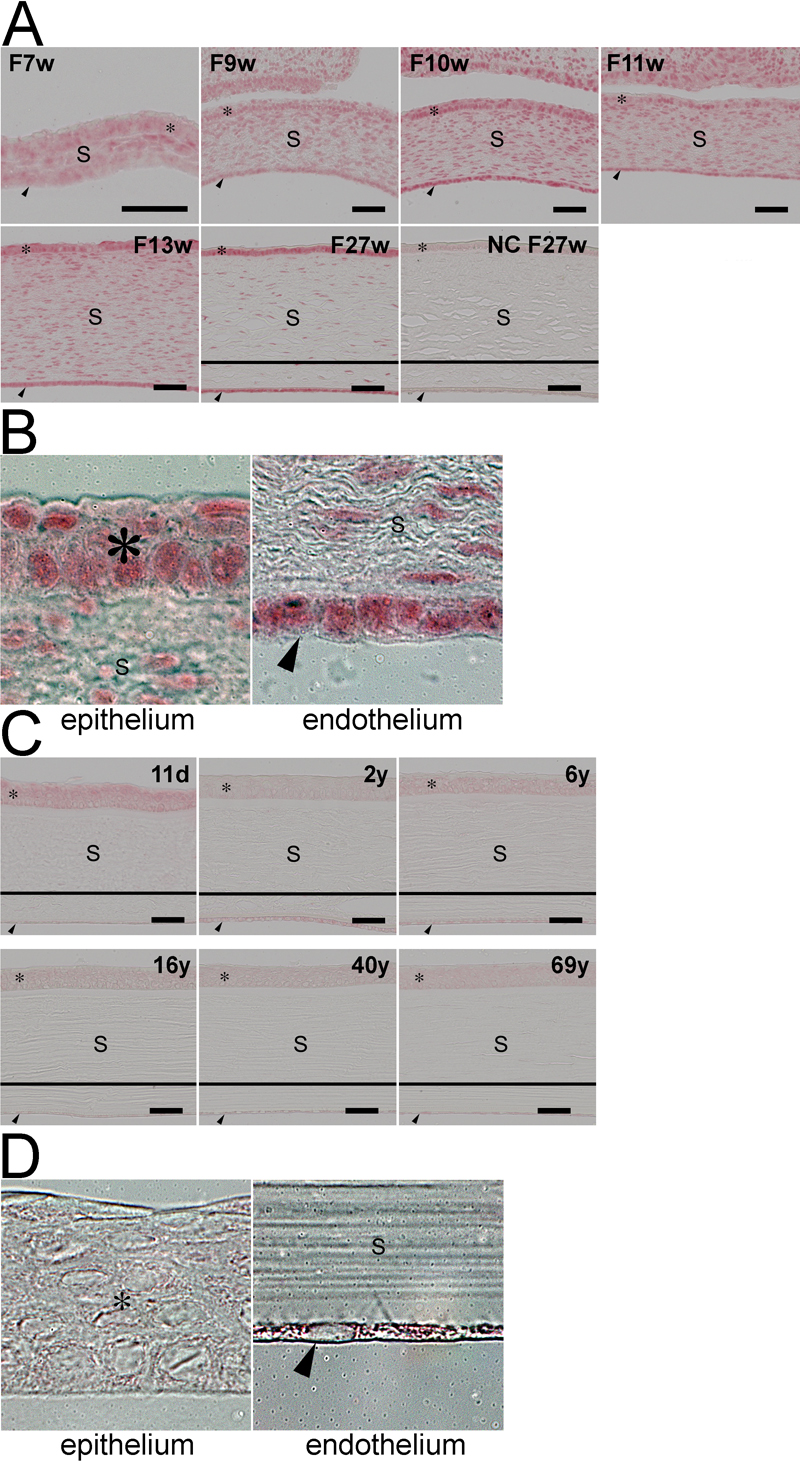![]() Figure 1 of
Nakamura, Mol Vis 2007;
13:1451-1457.
Figure 1 of
Nakamura, Mol Vis 2007;
13:1451-1457.
Figure 1. Immunostaining for Sp1 in the human cornea
The staining for Sp1 was visualized with Fast Red in pink. A: Staining at different fetal stages. Staining for Sp1 in the cornea was evident at the earliest human fetus (F) of 7 weeks (w) time point. From F7w to F27w, the moderate to strong Sp1 immunostaining was seen mainly in the nuclei of epithelial and endothelial cells. Staining in keratocytes was also observed, although it was difficult to discern whether the staining was nuclear or cytoplasmic. B: Deconvolution images at F10w. Sp1 immunostaining was obvious in the nuclei of epithelium and endothelium. C: Staining at new born to adult stages. The intensity of Sp1 staining in all layers of the cornea was substantially decreased in a specimen from 11-day (d)-old child after birth and remained low thereafter. D: Deconvolution images of specimen from donor 40 years (y) of age. Nuclear Sp1 immunostaining vanished. Asterisks and arrowheads indicate the corneal epithelium and endothelium, respectively. S, stroma. The scale bar is equal to 50 μm. NC, negative control. The nuclear staining of Sp1 in the epithelium at 2y, 11d, F11w and F27w was scored as ±, +, ++, and +++, respectively.
